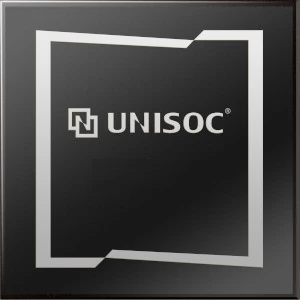Unisoc Tiger T606 vs Unisoc Tiger T612
The Unisoc Tiger T606 and T612 are two processors designed by Unisoc Technologies. Both processors have similar specifications but boast slight differences in terms of CPU core frequency.
Starting with the Tiger T606, it features an architecture comprised of 2x 1.6 GHz Cortex-A75 cores and 6x 1.6 GHz Cortex-A55 cores. With a total of 8 cores, this processor offers a balance between power and efficiency. It utilizes the ARMv8.2-A instruction set, ensuring compatibility with modern software and applications. Fabricated using a 12 nm lithography process, the T606 is capable of delivering excellent performance while maintaining lower power consumption. It operates within a thermal design power (TDP) of 10 Watts, ensuring efficient and stable operation.
Comparatively, the Tiger T612 processor comes with an architecture that includes 2x 1.8 GHz Cortex-A75 cores and 6x 1.8 GHz Cortex-A55 cores. Like the T606, this processor also has a total of 8 cores and utilizes the ARMv8.2-A instruction set. Both processors have identical lithography at 12 nm and operate within a TDP of 10 Watts. The key difference lies in the CPU core frequency, with the T612 offering slightly higher clock speeds of 1.8 GHz.
In summary, the Unisoc Tiger T606 and T612 are two similar processors designed for efficient and reliable performance. While both processors have the same architecture, instruction set, lithography, and TDP, the T612 offers slightly higher CPU core frequencies of 1.8 GHz. This small difference in clock speeds may result in marginally improved performance in tasks that require higher processing power. However, it is important to consider the overall system requirements and intended usage before making a decision between these two processors.
Starting with the Tiger T606, it features an architecture comprised of 2x 1.6 GHz Cortex-A75 cores and 6x 1.6 GHz Cortex-A55 cores. With a total of 8 cores, this processor offers a balance between power and efficiency. It utilizes the ARMv8.2-A instruction set, ensuring compatibility with modern software and applications. Fabricated using a 12 nm lithography process, the T606 is capable of delivering excellent performance while maintaining lower power consumption. It operates within a thermal design power (TDP) of 10 Watts, ensuring efficient and stable operation.
Comparatively, the Tiger T612 processor comes with an architecture that includes 2x 1.8 GHz Cortex-A75 cores and 6x 1.8 GHz Cortex-A55 cores. Like the T606, this processor also has a total of 8 cores and utilizes the ARMv8.2-A instruction set. Both processors have identical lithography at 12 nm and operate within a TDP of 10 Watts. The key difference lies in the CPU core frequency, with the T612 offering slightly higher clock speeds of 1.8 GHz.
In summary, the Unisoc Tiger T606 and T612 are two similar processors designed for efficient and reliable performance. While both processors have the same architecture, instruction set, lithography, and TDP, the T612 offers slightly higher CPU core frequencies of 1.8 GHz. This small difference in clock speeds may result in marginally improved performance in tasks that require higher processing power. However, it is important to consider the overall system requirements and intended usage before making a decision between these two processors.
AnTuTu 10
Total Score
GeekBench 6 Single-Core
Score
GeekBench 6 Multi-Core
Score
CPU cores and architecture
| Architecture | 2x 1.6 GHz – Cortex-A75 6x 1.6 GHz – Cortex-A55 |
2x 1.8 GHz – Cortex-A75 6x 1.8 GHz – Cortex-A55 |
| Number of cores | 8 | 8 |
| Instruction Set | ARMv8.2-A | ARMv8.2-A |
| Lithography | 12 nm | 12 nm |
| TDP | 10 Watt | 10 Watt |
Memory (RAM)
| Max amount | up to 8 GB | up to 8 GB |
| Memory type | LPDDR4X | LPDDR4X |
| Memory frequency | 1600 MHz | 1600 MHz |
| Memory-bus | 2x16 bit | 2x16 bit |
Storage
| Storage specification | UFS 2.1 | UFS 2.2 |
Graphics
| GPU name | Mali-G57 MP1 | Mali-G57 MP1 |
| GPU Architecture | Mali Valhall | Mali Valhall |
| GPU frequency | 650 MHz | 650 MHz |
| Execution units | 1 | 1 |
| Shaders | 16 | 16 |
| DirectX | 12 | 12 |
| OpenCL API | 2.1 | 2.1 |
| OpenGL API | ES 3.2 | ES 3.2 |
| Vulkan API | 1.2 | 1.2 |
Camera, Video, Display
| Max screen resolution | 1600x900@90Hz | 2400x1080 |
| Max camera resolution | 1x 24MP, 16MP + 8MP | 1x 50MP |
| Max Video Capture | FullHD@30fps | FullHD@30fps |
| Video codec support | H.264 (AVC) H.265 (HEVC) VP8 VP9 |
H.264 (AVC) H.265 (HEVC) VP8 VP9 |
Wireless
| 4G network | Yes | Yes |
| 5G network | Yes | Yes |
| Peak Download Speed | 0.3 Gbps | 0.3 Gbps |
| Peak Upload Speed | 0.1 Gbps | 0.1 Gbps |
| Wi-Fi | 5 (802.11ac) | 5 (802.11ac) |
| Bluetooth | 5.0 | 5.0 |
| Satellite navigation | BeiDou GPS Galileo GLONASS |
BeiDou GPS Galileo GLONASS |
Supplemental Information
| Launch Date | 2021 October | 2022 January |
| Partnumber | T606 | T612 |
| Vertical Segment | Mobiles | Mobiles |
| Positioning | Low-end | Mid-end |
Popular comparisons:
1
Qualcomm Snapdragon 685 vs Apple M3 (iPad)
2
Samsung Exynos 2200 vs Samsung Exynos 9611
3
HiSilicon Kirin 659 vs MediaTek Dimensity 8050
4
Apple A18 vs Qualcomm Snapdragon 860
5
Qualcomm Snapdragon 730G vs HiSilicon Kirin 710
6
HiSilicon Kirin 8000 vs Qualcomm Snapdragon 835
7
Samsung Exynos 8895 vs MediaTek Dimensity 6400
8
Samsung Exynos 2400 vs Qualcomm Snapdragon 695
9
MediaTek Dimensity 7200 vs HiSilicon Kirin 960
10
Qualcomm Snapdragon 439 vs Apple A16 Bionic
